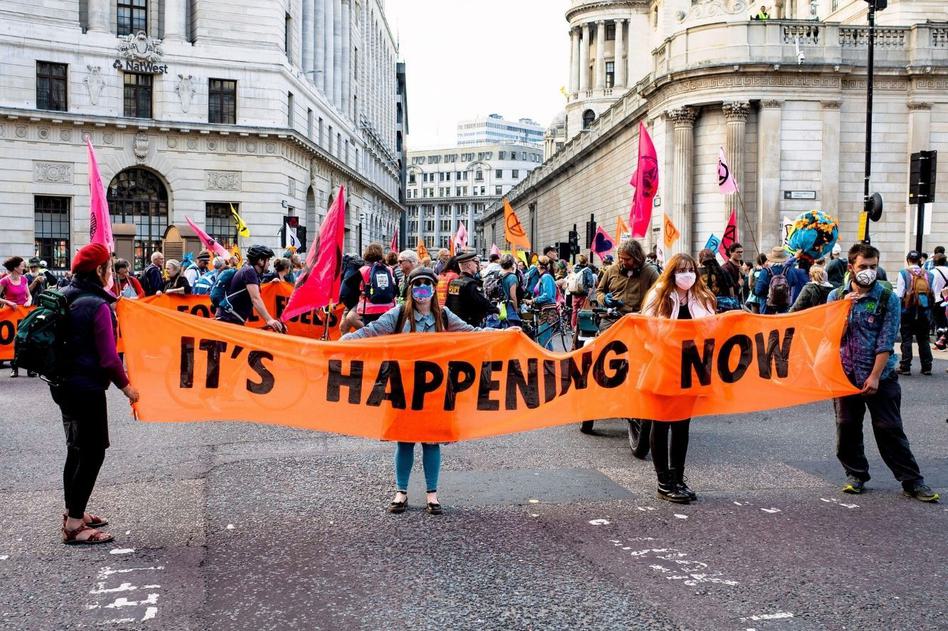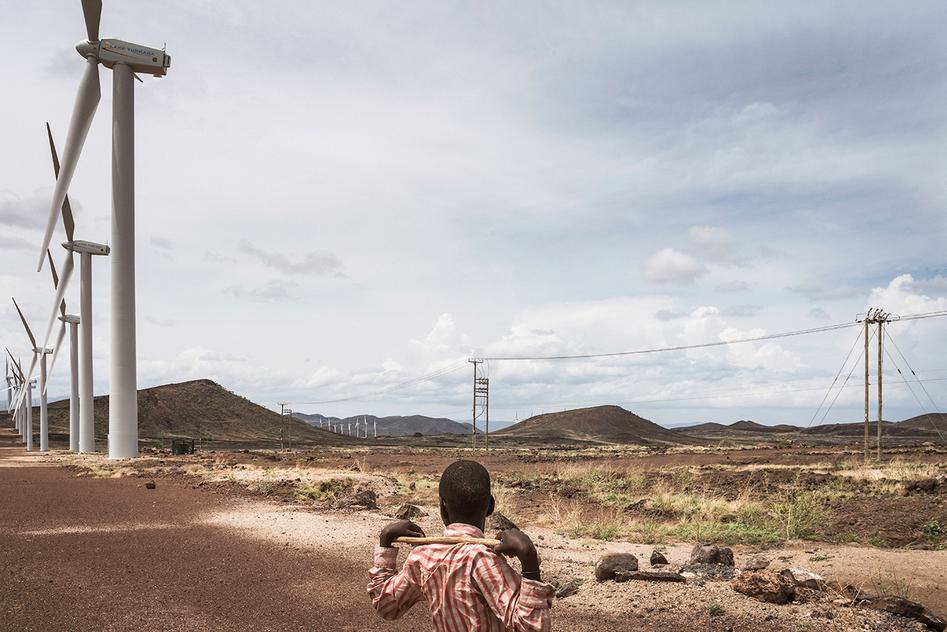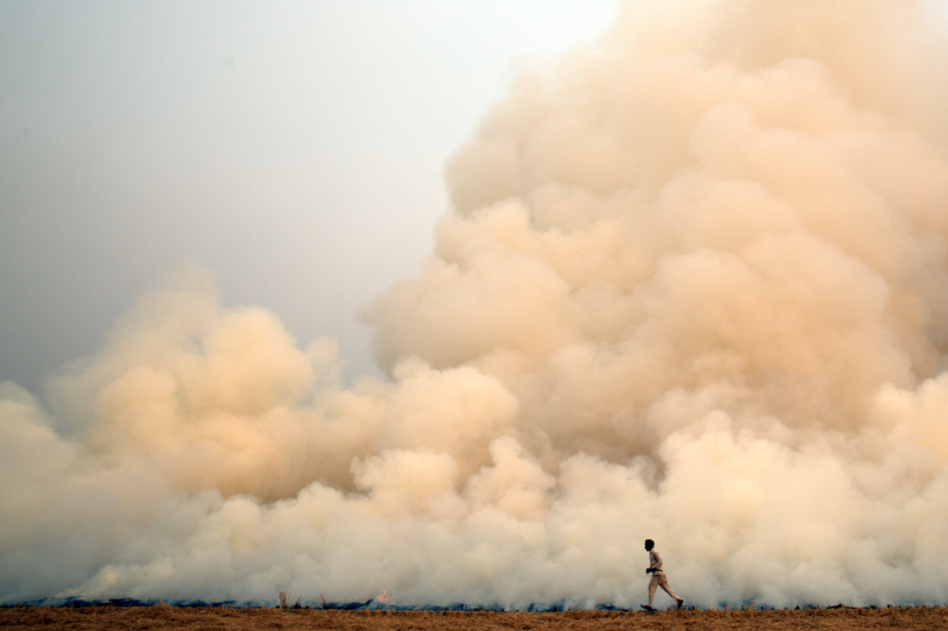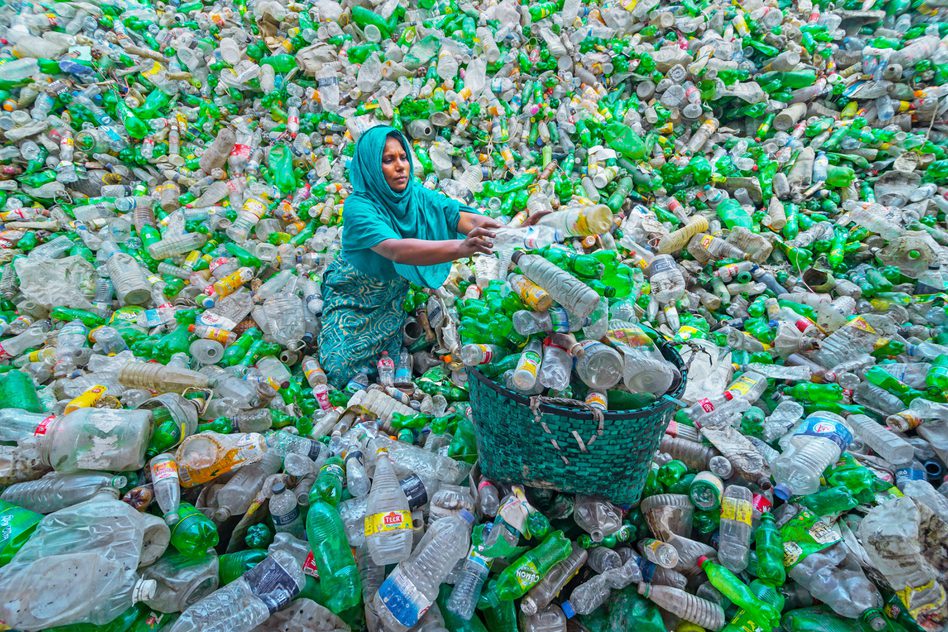Top Ten Business and Human Rights Issues in 2022
10 December 2021

The 2021 UN Climate Conference in Glasgow (COP26) focused global attention on the growing urgency of the climate crisis. But huge gaps still remain in commitment and action needed to confront the threat of global warming, and to do so in ways that are consistent with international human rights standards.
Looking ahead to 2022 and beyond, it is imperative that environmental and human rights agendas become holistically integrated. That includes making business and human rights standards and approaches more relevant to ongoing climate action at every level. To aid in this critical integration of agendas, IHRB’s Top 10 Business and Human Rights Issues for 2022 examines the intersection of human rights and climate action, highlighting ten priority areas demanding attention by governments, business, and civil society.
We dedicate this year’s Top 10 to the memory of John Ruggie, architect of the UN Guiding Principles on Business and Human Rights (UNGPs), and our former Chair and Patron. His tireless efforts to develop the UNGPs and work with the business and human rights community to advance their implementation across sectors and continents is an example to us all. There is perhaps no greater frontier than the net-zero future to which the world must now pivot. We must respond to the challenge in ways that build trust, solidarity, and shared responsibility for results.

State Leadership
Placing people at the centre of government strategies in confronting the climate crisis
COP26 outcomes represented initial, but ultimately inadequate, progress toward protecting humanity from the worst effects of the climate crisis. The negotiations in Glasgow also marked the moment, as one commentator noted, “when climate politics began to focus on the energy transition as a matter of industrial policy.”
Some progress was made at COP26, including a commitment to double adaptation finance and a requirement for countries with weak climate targets to improve them over the next twelve months. Important voluntary side-deals were made to stop gradually the use of methane and coal, and reverse deforestation, while some countries showed leadership in pledging to end oil and gas production.
But many countries were called out for their failure of leadership, refusal to act at scale, and taking only minimal steps to move business in a more sustainable direction – including transparency over corporate influence in the proceedings. Accountability and justice for historic contributions to climate change remains an unresolved issue, with loss and damage happening around the world with increasing regularity and the lack of a collective mechanism to address the issue.
Market-based measures and corporate strategies alone will not and cannot deliver results fast enough. Governments must maintain relentless pressure and transparency if the narrowing 1.5C path is to be achieved.
Tremendous industrial, energy, and technological transformation is required, and directing these in a people-centred way presents states with a once in a generation opportunity to tackle deep rooted, systemic social challenges at the same time.
Governments’ human rights obligations related to climate change are multiple and complex, but 2021 saw the connections between these agendas affirmed in important ways. The UN Human Rights Council recognised explicitly a human right to a clean, safe, and healthy environment, and created a new mandate for a UN Special Rapporteur on Human Rights and Climate Change. The UN Working Group on Business & Human Rights’ Roadmap for the next decade recognised just transition as a primary imperative. National legislation mandating joint human rights and environmental due diligence continues to gain momentum.
The ILO Guidelines for a "Just Transition Towards Environmentally Sustainable Economies and Societies for All" set out the foundations of state action: macroeconomic, sectoral, and enterprise policies that ensure jobs and decent work; rights and occupational safety and health; social protection; skills development; active labour market policies; and social dialogue. Each of these individual strategies have been tested in different contexts over the years, but national examples of ambitious and coherent implementation as a package are few and far between. The year ahead will see increasing demands on states to take the steps needed to incentivise faster rights-respecting climate action.
Tremendous industrial, energy, and technological transformation is required, and directing these in a people-centred way presents states with a once in a generation opportunity to tackle deep rooted, systemic social challenges at the same time.

Accountable Finance
Scaling up efforts to hold financial actors to their human rights and environmental responsibilities
The financial sector – including commercial banks, institutional investors, and development finance institutions – has come into sharper focus in recent years over how it uses its leverage to influence corporate behaviour, in particular how they address their environmental and social impacts.
Major financial actors are crucial to achieving net-zero. For example, the Glasgow Financial Alliance for Net Zero (GFANZ), launched in April 2021, has grown to include 450 institutions reportedly committing $130 trillion to the transition to net zero. But these efforts are being simultaneously undermined by financial actors who continue to invest in fossil fuel projects or fail to responsibly leverage their business relationships with carbon intensive industries.
Financial transparency around climate action has to date been sorely lacking. Calls for common definitions and standards are growing. These necessary improvements must include an integrated lens on social and environmental priorities to ensure humanity’s progress on a broad-based scale. The same goes for the many private sector initiatives to mobilise climate finance – including GFANZ but also #RacetoZero and ClimateAction100 amongst others – which are not currently demonstrating integrated social risk priorities in their climate action financing. “Pledge fatigue” is frustrating many stakeholders, but numerous resources and examples exist to deepen meaningful commitments and deliver positive results for the planet and people.
The present-day financial implications on rights and livelihoods are very real, with an estimated shortfall in insurance cover of US$227 billion for loss and damage from flooding, wildfires, and other climate-driven catastrophes already affecting vulnerable communities. At COP26, Scotland and Wallonia were the only governments that stepped up to pledge funding to small nations bearing the brunt of climate change. Without further government leadership strategic litigation will only grow against both states and financial actors for their roles in the current and future impacts of the climate crisis.
In 2022, the business and human rights community, including the newly created UN mandate on human rights and climate change, should continue to press for social accountability by financial actors pledging climate action. Continued efforts are needed to drive truly sustainable finance, particularly to embed mainstream understanding of the UN Guiding Principles on Business & Human Rights as the core standard of the S in ESG and their relevance across all types of financial actors.
Continued efforts are needed to drive truly sustainable finance, particularly to embed mainstream understanding of the UN Guiding Principles on Business & Human Rights as the core standard of the S in ESG and their relevance across all types of financial actors.

Dissenting Voices
Ensuring development and environment priorities do not silence land rights defenders and other critical voices
In 2020, Global Witness recorded 227 lethal attacks on land and environmental defenders around the world who were standing up against harms to communities connected to vital natural resources. Three countries – Colombia, Mexico, and the Philippines – account for more than half of reported incidents. Those responsible for such violence included security forces – army, paramilitary, police, and private security – as well as mafia and criminal gangs often acting at the behest of powerful interests (which may include the state or business, or both), seeking access to valuable resources. The majority of these instances involved logging in forests, mining, or other extractive resources.
Economic progress, if broadly shared, is crucial to realising development goals, but not if it undermines the rights of vulnerable communities, or displaces them without due process. History is replete with examples of human rights defenders acting as the last line of defence for marginalised communities' rights to land, water, and dignified livelihoods.
In their expanding pursuit of environmentally-sound energy, technology, and other projects, companies must pay due attention to human rights. That includes learning from experience of others on issues such as free, prior, and informed consent (FPIC) of affected communities, operating in a conflict-sensitive manner, paying attention to red flags, and ensuring heightened attention when operating in fragile environments.
Plans for generating energy in a decarbonised future face the age-old challenges of operating in often remote, fragile zones where communities have lived for centuries. Companies producing renewable energy, their suppliers, and the buyers of renewable energy, must learn from the mistakes of the past and not repeat them. So too must those involved in the growing array of nature-based solutions, which can only achieve their objective of protecting, restoring, and sustainably managing land and resources if their interventions are designed to be rights-based, culturally appropriate and anchored in the self-determined priorities of local peoples.
In 2022, much greater efforts are needed by companies and governments involved throughout energy and technology chains to engage and listen to communities and to find meaningful ways of addressing the legitimate concerns of land defenders and other activists. That includes those calling out intended or unintended consequences of rapid climate action. A key part of that process will involve more businesses recognising their shared interest in working with civil society groups to defend the shared space for democratic and peaceful forms of activism.
In 2022, much greater efforts are needed by companies and governments involved throughout energy and technology chains to engage and listen to communities and to find meaningful ways of addressing the legitimate concerns of land defenders and other activists.

Critical Commodities
Addressing human rights risks in mining to meet clean energy needs
Demand for the minerals and metals required to meet renewable energy needs is accelerating exponentially. This includes commodities like copper, cobalt, lithium, cadmium, rare earth elements, and silicon, which are essential for green economy technologies including solar photovoltaics, batteries, electric vehicle motors, wind turbines, fuel cells, and nuclear reactors. But the urgency to achieve net-zero as fast as possible risks overlooking the clear and present social risks for host communities and workers that must be managed as part of the sourcing, processing, and supply of essential commodities.
Some sources predict a 300% growth in demand for copper by 2050. Yet 47% of the top 300 undeveloped copper ore bodies globally are located on or near indigenous peoples’ lands, 65% are in high water risk areas, and many are located in conflict-prone or conflict-affected areas. Similarly, the exponential increase expected in lithium and cadmium extraction in regions already stressed by the lack of water, such as in Chile and Argentina, risks depleting groundwater resources for local and indigenous communities.
The extraction of rare earth elements has been linked to chemical pollution and tailings threatening rural groundwater aquifers, rivers, and streams in China, as well as hazardous exposure for workers. Similarly, polycrystalline silicon, much of which is comes from Xinjiang, is linked to widespread reports of forced labour.
Two-thirds of the world’s cobalt comes from the Democratic Republic of Congo, but so far the path to the green economy is only reinforcing, rather than addressing, the harsh and unsafe working conditions common to the local industry – in particular for the many women and children who work in the sector.
Geopolitical trends toward securitising supply and stockpiling of “transition minerals” raise the risks of deepening the troubling human rights realities that the many workers and communities delivering these critical raw materials already face. This is all the more concerning given that – despite many years in the spotlight and the wide range of existing guidelines and tools – most extractive companies have yet to demonstrate respect for human rights consistently and reliably in and around mine sites and throughout their supply chains (including those exiting coal projects). Recent research shows that although the majority of companies now have responsible sourcing policies, implementation efforts continue to lag behind.
Calls are growing to enforce environmental protection laws, investigate allegations of abuse, and make human rights due diligence a mandatory requirement throughout supply chains. The year ahead presents a critical moment to rethink the way economies and industries operate as attention mounts on the human rights implications of the drive to obtain the commodities critical to renewable energy, green technology, and more environmentally sustainable economies.
The year ahead presents a critical moment to rethink the way economies and industries operate as attention mounts on the human rights implications of the drive to obtain the commodities critical to renewable energy, green technology, and more environmentally sustainable economies.

Purchasing Power
Using the leverage of renewable energy buyers to accelerate a just transition
The private sector accounts for around half the world’s end-use of electricity. As fossil fuels have increased in price unpredictability and reputational risk, demand for and affordability of renewable energy – especially from data-heavy tech giants – has increased significantly.
In the US for example, the combined annual green power use of the top 100 companies currently amounts to 73 billion kilowatt hours – equivalent to the annual electricity use of nearly 6.9 million American homes, and more than double the amount drawn just three years earlier. In Europe, renewable corporate power purchasing agreements (CPPAs) are up 80% year-on-year since 2013.
But there is little evidence to demonstrate purchasers of renewables are including appropriate actions to prevent, mitigate, or remedy the human rights impacts of their energy suppliers. Industry initiatives – such as the Climate Pledge, Clean Energy Buyers Association (CEBA), European Platform for Corporate Renewable Energy Sourcing (RE Source), WBCSD’s Corporate Renewable PPA Forum, the WWF/WRI Corporate Renewable Energy Buyers' Principles, RE100, Climate Group, and investor initiatives – are singularly focused on scaling up the renewables industry and catalysing corporate transitions to renewable energy as fast as possible.
Buyers of renewables need to demonstrate that their energy transition is not being procured at the cost of workers and communities harmed by renewables companies’ activities – including the activities of their suppliers mining for commodities critical to the energy transition. This need not slow growth of the green economy. In fact, applying human rights principles – engagement, transparency, accountability, and non-discrimination – can strengthen climate outcomes and should become central elements of corporate power purchasing frameworks in the time ahead.
With large-scale purchasing of renewables comes significant leverage to effect change in the social performance of wind, solar, and other renewables producers. Many lessons can be learned from investors, who have long grappled with what it means to exert leverage in their clients’ activities. Leverage comes in many forms, and looking ahead it is imperative that buyers of renewable energy – private and public – use their individual and collective purchasing power to set clear human rights expectations, continually engage renewables companies on their human rights risks, and demonstrate leadership as key players in driving a truly just transition to the green economy.
It is imperative that buyers of renewable energy – private and public – use their individual and collective purchasing power to set clear human rights expectations, continually engage renewables companies on their human rights risks, and demonstrate leadership as key players in driving a truly just transition to the green economy.

Responsible Exits
Protecting workers and communities in transitions out of high-carbon activities
Coal fueled the Industrial Revolution and helped build economies around the world. Two centuries later, the climate crisis demands quick phase-out of coal and fossil fuels if the world is to limit the worst effects of global warming and ensure a sustainable, dignified life for future generations.
Yet the exit from coal and other historic energy sources raises paradoxes and dilemmas.
Climate mitigation measures will have a major impact on many economies, communities, and workers who have long depended on the production, processing, export and consumption of fossil fuels. Assets will need to be closed down and in some cases are already being sold on to less responsible actors with poor track records for respecting workers, communities, and the local environment. At the same time, delaying climate action has significant human and social implications, particularly for groups already vulnerable, disadvantaged, and facing discrimination.
Ensuring that transitions away from fossil fuels are socially just, equitable, and inclusive will require coordinated and collaborative approaches that involve all stakeholders, including governments, businesses, civil society, and rights-holders. ILO Guidelines emphasise that a just transition should be guided by coherent policies to anticipate impacts on employment, ensure adequate social protection for job losses and displacement, skills development, and social dialogue.
Integrated approaches encompassing the climate change and business and human rights agendas can guide responsibly managed exits in the "transition out", but there will need to be much greater engagement in specific contexts to gather evidence on the effectiveness of approaches that produce positive outcomes for workers and communities. Climate denial and inaction as well as corporate capture will also need to be actively combatted, to ensure worker and community impacts are managed and not used as reason to delay the net-zero transition.
The recent announcement by a number of governments to support South Africa over the coming years in its commitment to move away from coal and to accelerate its transition to a low emission, climate resilient economy is a potential template for the kinds of international collaboration required to guide local energy transitions. Such examples will need to be studied and monitored to ensure they move in directions that are consistent with international human rights and labour standards.
The energy transition is about the environment as well as people. Looking ahead, the "responsible exit” challenge will require commitment to meaningful engagement with diverse stakeholders and an equitable distribution of the benefits and losses resulting from the unavoidable economic and social changes to come.
Integrated approaches encompassing the climate change and business and human rights agendas can guide responsibly managed exits in the "transition out", but there will need to be much greater engagement in specific contexts to gather evidence on the effectiveness of approaches that produce positive outcomes for workers and communities.

Green Building
Constructing rights-based approaches to mitigation and resilience for buildings and infrastructure
Buildings and construction contribute over a third (37%) of global energy-related carbon dioxide emissions. The built environment also has a direct impact on people’s lives and the realisation of fundamental human rights such as rights to housing, water and sanitation, and physical and mental health.
The building and construction industries are now moving rapidly to mitigate their carbon footprints, while strengthening resilience to climate impacts such as extreme heat, flooding, and rising sea levels, and COVID-driven economic recovery. Action will require: prioritising use and adaptation of existing buildings over new builds where possible, and curbing speculative real estate that contributes to empty buildings; improving energy efficiency; decarbonising power supplies; and reducing the “embodied carbon” stored in building materials.
Buildings also depend on the infrastructure that connects and supports them, including energy, water, transport, and “social” infrastructure such as hospitals and schools. Here, too, there are risks and opportunities for people as infrastructure aims to mitigate and adapt to climate change. New infrastructure – as seen in initiatives like Build Back Better World, Belt and Road, Blue Dot Network, and Global Gateway – goes beyond mere bricks and mortar, raising significant geopolitical relevance. Accountability and transparency in decision-making on what infrastructure is built, and how, will be critical – with civil society and responsible business playing an important role.
Balancing new infrastructure with strengthening the resilience of existing infrastructure is also important. This presents a financing challenge: finance for adaptation continues to make up only around a fifth of overall climate finance, with private financial flows increasingly moving into infrastructure as an asset class, where mitigation projects are prioritised. Human rights considerations relating to the prioritisation of investments, and the processes by which they are implemented, also arise in the context of “smart”, technology-driven approaches to climate mitigation and adaption in the built environment.
In 2022 and beyond, the challenge throughout the built environment lifecycle will be for building and construction industries to deliver mitigation and resilience while avoiding corruption, reducing inequality, preventing harm to people, and unlocking opportunities for workers and vulnerable communities. Managed well, these processes can create significant opportunities in job creation, improve access to energy-efficient housing, and provide superior indoor and outdoor air quality.
In 2022 and beyond, the challenge throughout the built environment lifecycle will be for building and construction industries to deliver mitigation and resilience while avoiding corruption, reducing inequality, preventing harm to people, and unlocking opportunities for workers and vulnerable communities.

Agricultural Transitions
Embedding equity and justice in global food production transformations
Food production is responsible for about one-third of global emissions, with the largest emissions coming from the heavily industrialised global north reliant on intensive, large-scale farming. Unsustainable practices, such as burn clearing, are common. Food waste is an enormous contributor to the overall figure, with around one-third of food produced globally wasted post-harvest – simultaneously contributing to global inequity and the more than 2 billion food-insecure people around the world.
Agriculture is often identified as one of the sectors most vulnerable to climate change. Droughts, floods, wildfires and heatwaves have all destroyed or reduced harvests in recent years, and the introduction of new pests and diseases are expected as the world continues to warm.
Environmental instability has also impoverished many farmers and workers to the point that they have been forced to migrate to other regions and countries to find new livelihoods, or in many instances to take their lives (including in countries as diverse as Australia, with its large farms, and India, where most holdings are small).
Decarbonising the agriculture sector is critical to maintaining a path toward limiting global warming to 1.5 degrees. 2021 saw efforts mobilise to stimulate the most influential food and agriculture companies to apply sustainable business practices throughout their operations as well as use their influence to encourage value chain partners to do the same, and momentum for regenerative agriculture is growing.
The necessary reforms present opportunities for the sector to reduce emissions while addressing food security, resilience, and rural development goals. In doing so, it will be imperative for underrepresented and marginalised groups – such as women, small holders, migrant workers, and indigenous peoples – to be at the centre of this industrial transformation and decision making by both government and business, or else changes will understandably be met with resistance.
ActionAid’s Principles for a Just Transition in Agriculture offer four key steps to guide governments and business in achieving this rights-based transformation: i) address – don’t exacerbate – inequalities; ii) transform the food system to work for people, nature, and the climate; iii) ensure inclusiveness and participation; and iv) develop a comprehensive framework.
While the just energy transition has begun to gain tangible momentum in policy fora such as the UNFCCC, the same cannot be said for the agricultural sector. The 2022 UN Climate Conference in Egypt (COP27) will provide an opportunity to ensure the highest emitting sectors, including agriculture, are given the appropriate scrutiny and resourcing for just transition policy design and support.
The 2022 UN Climate Conference in Egypt (COP27) will provide an opportunity to ensure the highest emitting sectors, including agriculture, are given the appropriate scrutiny and resourcing for just transition policy design and support.

Transport Transformations
Mobilising green transport to be inclusive and rights-respecting
Transport is essential to trade, economic growth, and broad-based employment, but it is critical that it operates in a sustainable manner. The transport sector, including passenger and freight activity, remains largely carbon-based and currently accounts for approximately 23% of total energy-related CO2 global greenhouse gas emissions. The sector also continues to require significant reforms to make transport options affordable and available to all, and to address other human rights concerns including working conditions, gender-based discrimination, and risks relating to land acquisition.
In October 2021, the second Global Sustainable Transport Conference brought together governments, UN agencies, and a range of stakeholders to take steps aimed at realising more sustainable transport – meaning universally accessible, safe (particularly for women, minorities, and other marginalised communities), and efficient while reducing environmental impact. These aims are viewed as being of vital importance to achieving the 2030 Sustainable Development Agenda and the Paris Climate Agreement. It remains to be seen whether including sustainable transport as part of UN processes will lead to concrete steps at national level over the coming years.
At COP26, a declaration on accelerating the transition to 100% zero emission cars and vans signaled strengthened commitments on the part of some governments, investors, automotive companies, fleet owners and operators, to overcome current barriers to faster progress in this area. The declaration acknowledges that shifts to zero emission vehicles must happen alongside wider system transformations on issues such as public and shared transport and greater efforts to address the full value chain impacts of the sector. Zero-emission vehicles are crucial, but the commodities on which they depend pose human rights challenges that the sector has barely examined.
As trade unions and other advocates have noted, opportunities for job creation and strengthened social inclusion in a reformed and reimagined transport sector remain largely unexplored. More investments in creative approaches to connecting different mobility demands - from commuting to freight - with low-carbon and rights-affirming alternatives will be needed in the time ahead. Plans such as the European Commission’s 2020 Sustainable and Smart Mobility Strategy, which calls for “decisive action to shift more activity towards more sustainable transport modes”, and which makes a number of targeted commitments for the coming decades, must now be implemented and replicated in other regions.
The year to come will likely see increasing demands on key actors in the transport sector to more rapidly scale up transformations of mobility systems needed to achieve climate and sustainable development objectives and to do so in ways that ensure respect for the rights of all people.
Opportunities for job creation and strengthened social inclusion in a reformed and reimagined transport sector remain largely unexplored. More investments in creative approaches to connecting different mobility demands - from commuting to freight - with low-carbon and rights-affirming alternatives will be needed in the time ahead.

Circular Economy
Generating positive social outcomes while reducing the impact of materials and waste
The extraction, processing, use and disposal of materials in many products and structures is a major contributor to climate change, with adverse environmental and social impacts as well.
The building and construction sector uses many materials that add to global emissions. Cement alone contributes 8% of global emissions, and the contributions of steel, brick, and stone are significant. Technology and renewable energy sectors rely on minerals and metals like coltan, lithium, and copper. Excessive use of raw and processed fabrics in the garment industry is exacerbated by “fast fashion” business models.
Growing interest in a “circular economy” focuses on reducing materials footprints and preventing disposal in landfills. It prioritises re-purposing or re-using materials already in circulation, and recycling others. Such approaches reduce dependence on supply chains, and related risks of human rights abuses, and can generate positive social outcomes, including stimulating new industries and generating new jobs.
The benefits, however, are not inevitable. New approaches to waste management and recycling may displace methods that provide incomes for informal workers, particularly women. To be sure, some traditional methods are degrading, dangerous, or dehumanising and these must change. But circular economy transformations must not disregard the livelihoods of informal workers . Similarly, “green” industries do not necessarily have strong worker protections, nor provide opportunities for those facing barriers to employment.
High income countries have much larger material footprints per capita than low-income countries – by some estimates, as much as 10 times – making it critical that nationally-determined contributions (NDCs) to climate change include not only emissions generated within borders, but also the impacts of consumption. Circular economy innovation in highly industrialised contexts may overlook the fact that for many low-income and traditional communities, minimal material footprints and re-use is a way of life.
In the time ahead, ensuring that circular economy developments move in a positive direction for workers and communities will likely gain momentum and involve strategic interventions by multiple actors.
Investors and owners of companies, buildings, and infrastructure projects will need to assess materials impacts, apply “materials passports”, and guide shifts towards circular practices consistent with human rights standards.
Companies, supported by investors, will need to scale up innovations in materials re-use and recycling, and provide platforms that connect buyers to low-carbon and responsibly-produced materials.
Governments – from national level to regions and cities – have critical roles to play as well, by harnessing regulatory, procurement, and convening powers to reduce waste , incentivising circular strategies, and ensuring strong social and worker protections.
In the time ahead, ensuring that circular economy developments move in a positive direction for workers and communities will likely gain momentum and involve strategic interventions by multiple actors – investors and owners, companies, and governments.



